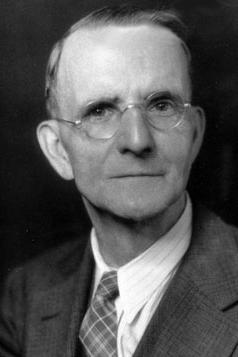
Clarence Spicer
Clarence Spicer displayed insatiable curiosity as a child, and as he grew older, his natural inquisitiveness brought him to a life of invention. To prepare youths for the upcoming industrial revolution, Alfred Academy had recently established a curriculum of mechanical courses. It is thought that Clarence’s family learned about the Academy through The Sabbath Recorder, a weekly publication commonly found in Seventh Day Baptist homes (the Spicer family had an enduring and honorable history of being associated with the Seventh Day Baptist Church). Recognizing a community that upheld their faith and provided a more extensive education than what was available in West Hallock, IL, the Spicer parents sent Clarence to the preparatory school of Alfred University.
Though far from home, Clarence was surrounded by acquaintances and relatives and remained involved in Alfred’s Seventh Day Baptist Church in addition to his studies. After graduation, he married a fellow classmate, Anne Burdick, and the two traveled to the Spicer Family Farm in Illinois.
In 1899, Clarence and Anne returned to Alfred. Clarence enrolled in the Mechanical and Electrical Engineering program at Cornell University. For an assignment, Clarence designed a motor car. He created a revolutionary invention: the universal joint in automobiles. His product made vehicles more reliable, which directly contributed to the rise of the automobile industry.
Clarence became an Alfred University trustee in 1917 and remained so until his death in 1935. He was additionally inducted into the Automotive Hall of Fame in 1995. His company, the Spicer Manufacturing Co., is known today as the Dana Corporation.
